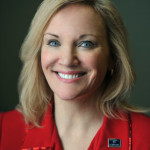Nichola D. Gutgold | Professor of Communication Arts and Sciences and Schreyer Honors College Associate Dean for Academics
Johnna Purcell | Penn State sophomore majoring in political science and global and international studies
No one would deny that Hillary Clinton has been a trailblazer, and she has gotten closer to the U.S. presidency than any other woman in American history. Before she ran for president in 2008, every woman who ran before her was a symbolic candidate.
So why is she struggling to make that case to young voters? Since her crushing New Hampshire defeat, she has begun to address her disconnect with young voters, particularly young women.
In her concession speech, she noted, “I know I have some work to do. Particularly with young people.”
She went on: “Even if they are not supporting me now, I support them, because I know I’ve had a blessed life, but I also know what it is like to stumble and fall. It is not whether you get knocked down that matters, but whether you get back up.”
While the sentiment was spot on, her distancing language lacked the connection she needs to make.
In her debate Thursday evening, she reiterated a version of that sentiment with: “I have spent my entire adult life working toward making sure that women are empowered to make their own choices, even if that choice is not to vote for me. I believe that it’s most important that we unleash the full potential of women and girls in our society.”
She went on to underscore the needs of a leader who will champion women’s issues when she said, “We need a leader on women’s issues …” somebody who, “leads the efforts to protect the hard-fought gains that women have made, that, make no mistake about it, are under tremendous attack.”
This is a most unusual primary season, dominated by two unlikely candidates that have captured voter imagination despite conventional wisdom. The question of Trump’s success in particular is confounding political scientists who have been studying presidential elections for decades. And young voters have embraced Bernie Sanders in a way that many could not have anticipated only a year ago.
So what do Sanders and Trump have that more traditional candidates like Clinton and Jeb Bush don’t? For one, their branding and images are instant and clear. What should be big plusses — name recognition and long political resumes — are actually turning out to be negatives.
Sanders has a cult of personality around him that Clinton does not have. Many of us, and certainly most college students, cannot even remember a time when a Clinton and a Bush were not household names. Perhaps rejecting Hillary Clinton equals rejecting the establishment for young voters. Sanders and even Donald Trump have been able to feed off of that energy as young voters have been inclined to “feel the Bern” and “Make America Great Again.”
Is this a case of branding over experience? The election is still months away and most pollsters think that Hillary Clinton will be the Democratic nominee. The Republican nominee is tougher to call, but one thing is clear: Whoever it is will need to harness the support of young voters to make his or her way to the White House.
Read this story on PennLive.com (Feb. 21, 2016)


